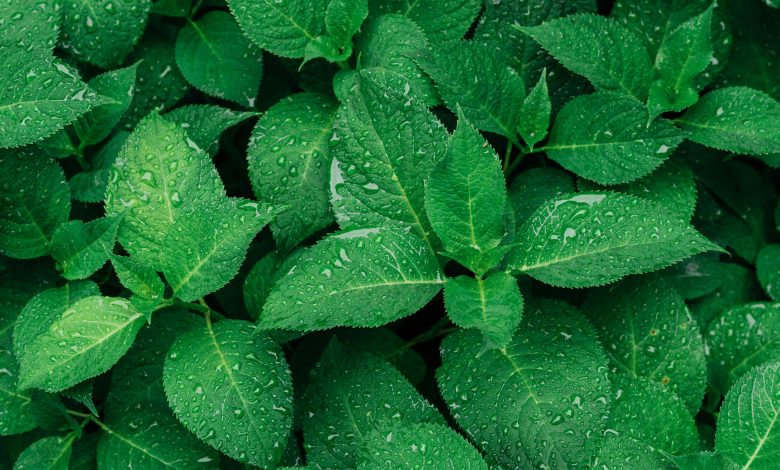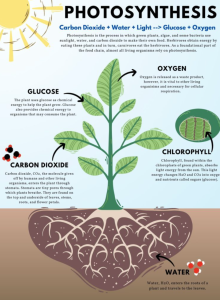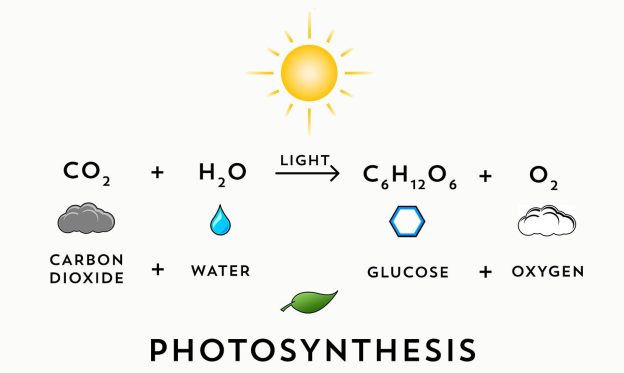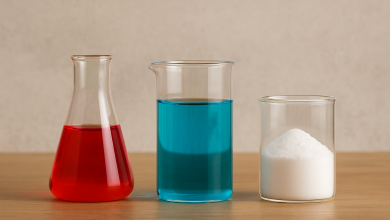
Photosynthesis is a vital biological process through which green plants, algae, and certain bacteria convert light energy into chemical energy stored in glucose.

This process sustains the organisms that perform it and supports life on Earth by producing oxygen as a by-product.
Definition: Photosynthesis is the process by which phototrophic organisms use sunlight to synthesize foods from carbon dioxide and water. The general equation for photosynthesis can be summarized as follows:
6CO2 +6H2O + light energy→C6H12O6 +6O2

In this equation:
CO₂ (carbon dioxide) and H₂O (water) are the reactants.
C₆H₁₂O₆ (glucose) and O₂ (oxygen) are the products.
The Basic Working of Photosynthesis
Photosynthesis occurs in chloroplasts, which contain a pigment called chlorophyll. Chlorophyll absorbs sunlight, primarily blue and red wavelengths, and reflects green, which is why plants appear green.
Using energy from sunlight, chlorophyll splits water molecules (H₂O) into oxygen (O₂), hydrogen ions, and electrons. The oxygen is released as a byproduct into the air, and the hydrogen ions and electrons are used in later stages.
The light energy is converted into chemical energy in the form of ATP (adenosine triphosphate) and NADPH. These molecules act as energy carriers, powering the next stage of photosynthesis.
In the Calvin cycle, which doesn’t require light directly, plants use the energy from ATP and NADPH to convert carbon dioxide (CO₂) from the atmosphere into glucose. This cycle happens in the stroma of chloroplasts, and it’s where CO₂ is combined with a 5-carbon molecule to produce glucose.
The plant ultimately produces glucose, which it uses for energy and growth. Glucose can be stored in the form of starch or used to create other organic compounds like cellulose, which strengthens cell walls.
Importance of Photosynthesis
Photosynthesis is the primary source of food and energy for almost all living organisms. Plants, algae, and certain bacteria, which are producers, convert sunlight into chemical energy stored in glucose. Animals (consumers) then feed on plants (or on other animals that eat plants), transferring that energy up the food chain.
Photosynthesis produces oxygen as a byproduct. Nearly all oxygen in Earth’s atmosphere originates from photosynthetic organisms, particularly plants and phytoplankton in the oceans. This oxygen is essential for respiration, which is how most organisms, including humans, release energy from food.
Photosynthesis helps reduce the concentration of carbon dioxide (CO₂) in the atmosphere, balancing CO₂ levels. Plants absorb CO₂ during photosynthesis, which not only reduces greenhouse gasses but also helps control global warming and climate change.
The glucose produced through photosynthesis serves as an energy reserve. Plants use glucose for growth and metabolic functions, and they store it in roots, stems, leaves, and fruits. When other organisms consume these parts, they access that stored energy, making photosynthesis the ultimate energy source for all living beings.
Photosynthesis enables the growth of plants, which provide habitats and food for other organisms. Forests, grasslands, and other plant-rich ecosystems rely on photosynthesis to support diverse communities of organisms, from herbivores and carnivores to decomposers.
Fossil fuels like coal, oil, and natural gas were formed millions of years ago from ancient plants and microorganisms that stored energy through photosynthesis. While burning these fuels releases CO₂, the original energy came from sunlight captured by photosynthetic organisms.
Photosynthesis is fundamental to agriculture, as crops use sunlight to grow. Enhancing photosynthesis in agricultural systems can increase food production, which is crucial for feeding a growing global population.
By absorbing CO₂ and releasing oxygen, photosynthesis plays a key role in maintaining the balance of gasses in the atmosphere, supporting a stable environment suitable for life. Its regulation of greenhouse gasses also has a moderating effect on Earth’s climate.




